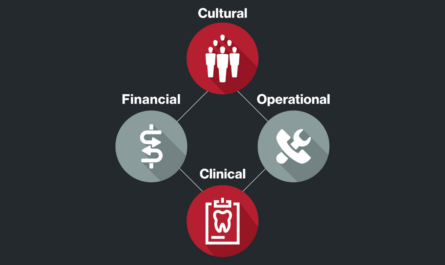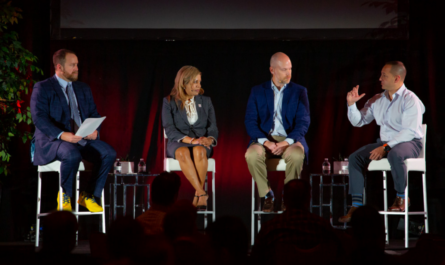Unlock new levels of efficiency and patient care by integrating virtual talent into your dental practice.
By Michael Bonanno, NLP, President, ZIA
In today’s rapidly evolving dental landscape, technology plays a crucial role in shaping how practices operate and deliver patient care. As we explore the “Best of Technology” in this issue, it’s the perfect time to highlight a transformative approach that’s redefining dental staffing: integrating virtual talent. By moving away from outdated, labor-intensive methods and embracing innovative solutions, dental practices can enhance efficiency, accuracy, and overall patient experience.
Innovation and Unique Features
What sets the integration of virtual talent apart from traditional staffing methods is its ability to leverage cutting-edge technology to meet the unique needs of modern dental practices. Unlike conventional hiring, which can be time-consuming and geographically constrained, virtual talent integration uses advanced recruitment platforms that connect practices with top-tier professionals worldwide.
These platforms often utilize AI-driven matching algorithms to ensure the right fit for each role, taking into account factors like experience, skill set, and cultural compatibility. Additionally, cloud-based management systems facilitate seamless communication and collaboration between virtual teams and in-office staff, breaking down the barriers of distance and time zones.
Case Study: A prime example is Dr. Jensen’s dental practice, which faced chronic staffing shortages, leading to overworked staff and declining patient satisfaction. By integrating virtual administrative talent, Dr. Smith was able to offload time-consuming tasks like appointment scheduling and insurance processing to a team of experts, all managed remotely. This change not only improved operational efficiency but also allowed the in-office team to focus more on patient care, leading to a 28% increase in patient satisfaction scores within three months.
Benefits to Dental Practices
The adoption of virtual talent in dentistry offers numerous benefits that extend beyond just filling staffing gaps. One of the most significant advantages is the improvement in operational efficiency. Virtual teams can handle a wide range of tasks, from billing and collections to patient outreach and follow-ups, freeing up in-office staff to focus on direct patient care.
Moreover, virtual talent brings a level of expertise and specialization that can be hard to find locally. For example, a virtual revenue cycle management (RCM) expert can streamline the billing process, reduce claim denials, and increase overall revenue – tasks that might otherwise overwhelm an in-house team. This level of specialization can lead to significant cost savings and improved financial performance for the practice.
Case Study: Consider the case of Precision Dentistry and Implants, which struggled with a high rate of billing errors and slow payment cycles. After integrating a virtual RCM advisor, the practice saw a 30% reduction in billing errors and a 15-day decrease in the average payment cycle, translating to a more stable cash flow and improved financial health.
User Experience
One of the most critical factors in the success of virtual talent integration is the user experience. The technology and platforms used to manage virtual teams are designed to be user-friendly, ensuring that dental practices can adopt and integrate them with minimal disruption.
For instance, the onboarding process for virtual talent is often streamlined, with platforms offering guided setup and training to ensure smooth transitions. This ease of use is further supported by intuitive interfaces that allow staff to communicate with virtual teams, assign tasks, and monitor progress in real time.
“Integrating virtual talent into our practice was one of the best decisions we’ve made,” says Dr. Ballew. “The platform was incredibly easy to use, and the support we received during the onboarding process made the transition seamless. Our virtual team has become an indispensable part of our operation.”
Scalability and Flexibility
One of the standout features of virtual talent is its scalability. Whether you’re a single-location practice or an emerging dental service organization (DSO), virtual talent can grow with you. This flexibility is especially beneficial for practices looking to expand, as it allows them to scale their workforce without the overhead costs associated with hiring additional in-office staff.
Customization is another key advantage. Virtual talent solutions can be tailored to fit the specific needs of a practice, whether that involves specialized administrative support, clinical assistance, or even patient communication services. This adaptability ensures that practices of all sizes and specialties can benefit from virtual talent integration.
Dr. Kildoo in Green Valley, AZ, used virtual talent to support its expansion into cosmetic dentistry. By integrating a virtual team specialized in patient consultations and follow-ups, the practice was able to manage the increased patient load without compromising on service quality.
Future Development
As the dental industry continues to evolve, so too will the technology that supports virtual talent integration. Upcoming developments in this field include enhanced AI-driven tools for even more precise talent matching, advanced analytics for performance tracking, and expanded platforms that offer comprehensive support for both clinical and administrative roles.
Looking ahead, the role of virtual talent in dentistry will likely expand, with practices increasingly relying on these services to stay competitive in a fast-paced industry. By embracing these developments, dental practices can ensure they are well-equipped to meet the demands of the future, from improved patient care to enhanced operational efficiency.
The future of dentistry lies in the seamless integration of virtual and in-office teams, creating a model that allows for maximizing patient engagement and EBITDA simultaneously.
Conclusion
As we explore the best of technology in this issue, it’s clear that integrating virtual talent is more than just a trend – it’s a strategic move that can transform dental practices of all sizes. By harnessing the power of advanced technology, dental practices can not only improve their operations but also provide a better experience for their patients. So, stop giving patients the finger by clinging to outdated methods, and embrace the future of dentistry with virtual talent integration.
Ready to learn more about how virtual talent can revolutionize your practice? Contact us today to see how we can help you integrate these cutting-edge solutions into your operations.
Michael Bonanno entered the corporate world of dentistry in 2008 and has since gained over 15 years of experience. He has served as an equity partner in a group of practices, a small DSO, and a dental transitions company. Additionally, Michael owned a virtual support company that supported hundreds of practices across the U.S. Currently, as the president of ZIA, he is focused on helping dental groups and practices maximize EBITDA by aligning their talent strategies with their business strategy, maximizing the value of both onsite and virtual teams.






